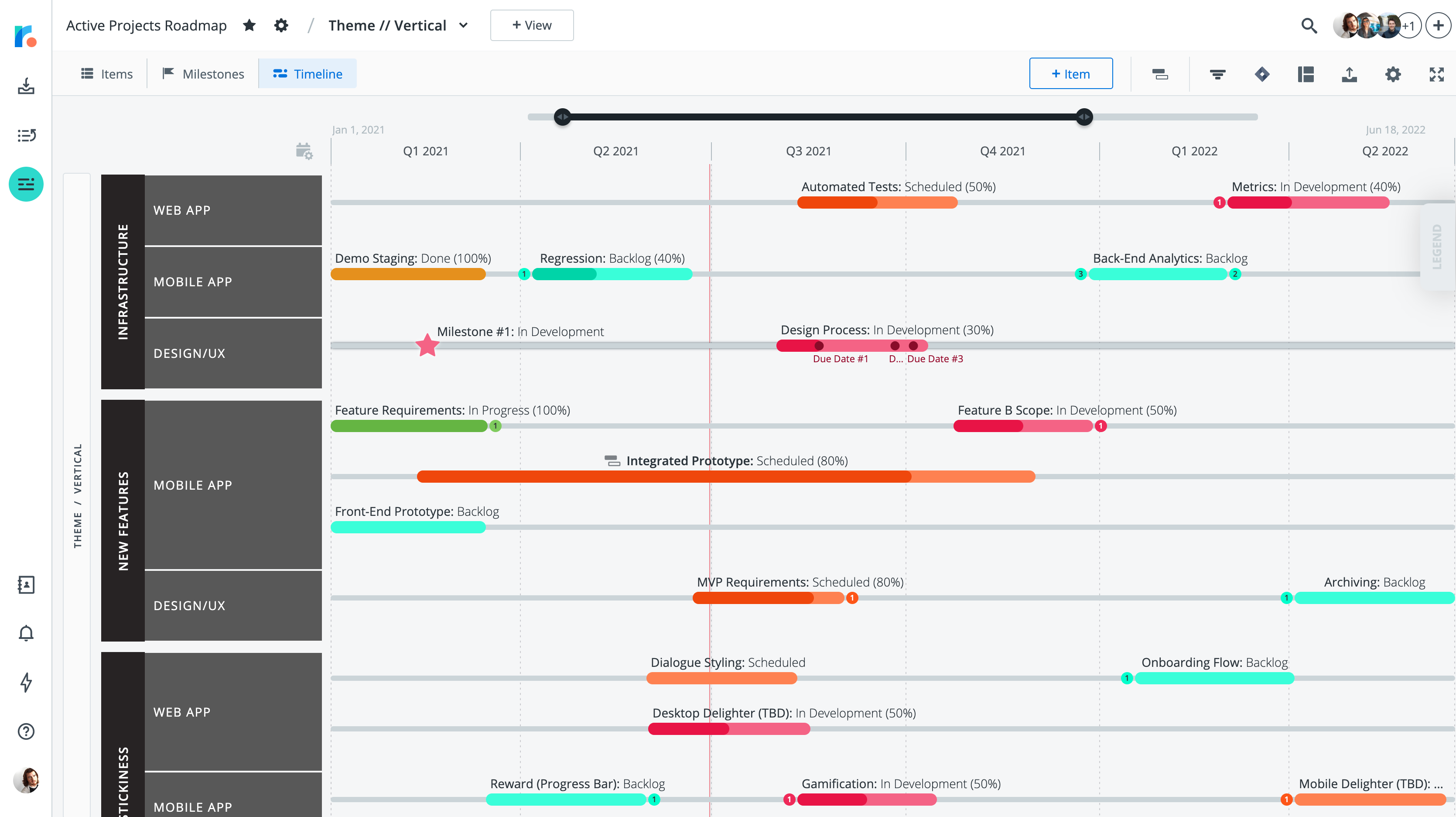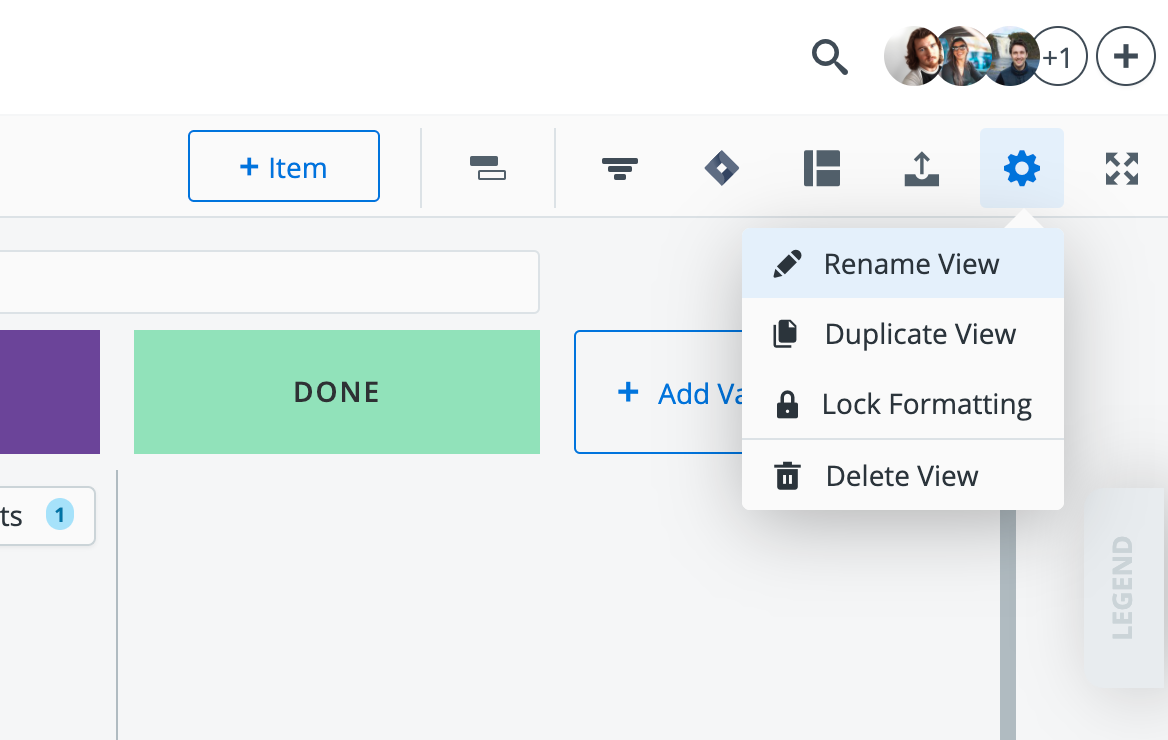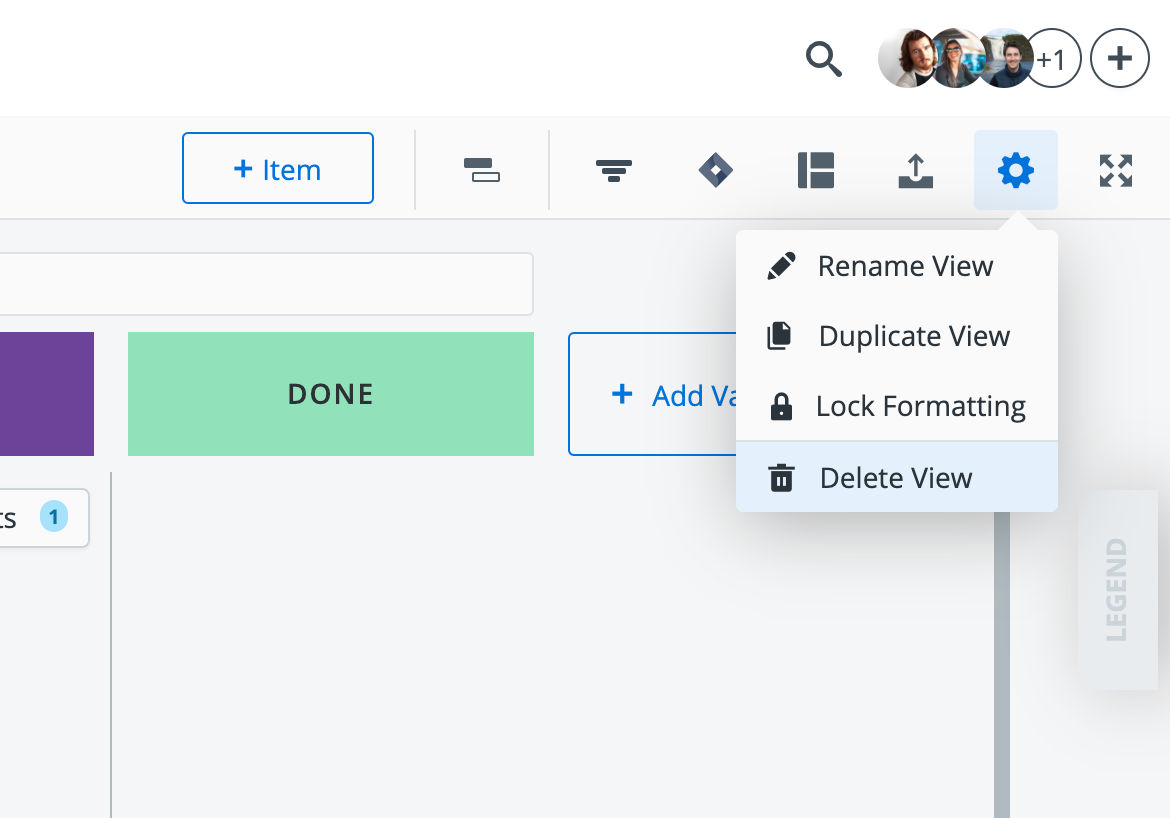Creating & Managing Views
This feature is only available to Collaborators, User Managers, and Account Administrators.
The true power of Strategic Roadmaps is the ability to create multiple visualizations of your roadmap items tailored to specific needs and audiences. Visualizing a roadmap in Strategic Roadmaps takes just minutes. It's a simple matter of picking the visualization type, setting up and applying filters, and choosing headers and other pivots.
Strategic Roadmaps has two types of visualization: Timelines and Swimlanes. Visualizations are saved as roadmap views, each with its own set of filters and pivots.
Working with Timelines

Timelines are the more traditional way of visualizing a roadmap, showing a time-oriented view of items such as initiatives and objectives punctuated by milestones to highlight goals, achievement, and other important time markers.
Timelines are great when you want to roadmap with dates. Timelines use item dates or date ranges to pivot data along a timeline. You can adjust the time scale in a Timeline as well as select time periods, including weeks, months, quarters, and years.
In a Timeline, you can select up to two fields to pivot on and use as headers. You further pivot data using color and selecting different fields for the item labels.
To get started with creating Timelines, check out our article on creating a Timeline visualization.
Working with Swimlanes

Swimlanes are the right choice when you want a "no-dates" roadmap or a more agile roadmap that can be pivoted on themes, sprints, or epics. They allow you to plot items on a dynamic grid and choose fields for both horizontal and vertical pivots.
But Swimlanes don't have to be "date-less". For example, you can create a Swimlane that uses dates to plot items along more flexible or longer-term time periods (Quarter or Year). Or, you can assign items to time buckets (e.g., Soon or Future) and use those as a "time" pivot.
Rename a View

To rename a view on your roadmap:
In the View Selector at the top of your roadmap, navigate to the view you want to rename.
On the Roadmap Toolbar in the top-right corner, click into the Settings icon.
Select the Rename View option in the drop-down menu.
In the modal that appears, enter a new name for the view.
Click Save to persist that change.
Who can rename a view?
Owners & Editors can update the names of any of the views in any roadmap which has been shared with them, while Viewers are unable to rename any of the views in roadmaps which have been shared with them. This change is immediate and will be visible to all users with access to this roadmap.
Duplicating Views

Instead of creating a new view from scratch, you can duplicate an existing view and customize it as needed. To duplicate a view on your roadmap:
In the View Selector at the top of your roadmap, navigate to the view you want to duplicate.
On the Roadmap Toolbar in the top-right corner, click into the Settings icon.
Select the Duplicate View option in the drop-down menu.
In the modal that appears, enter a new name for the view.
Click Save to persist that change.
Who can duplicate views?
Owners & Editors can duplicate views in any roadmap which has been shared with them, while Viewers are unable to duplicate any of the views in roadmaps which have been shared with them.
Duplicating a view copies the source view's Timeline or Swimlane, filter set, and data pivots to the new view. Since permissions apply at the roadmap-level and not at the view-level, users with access to the roadmap will be able to see the new view.
Locking & Unlocking a View
To avoid having to worry about unwanted changes in your roadmap views, you can lock the formatting of an existing view and prompt users to duplicate the view should they need to access it.
Locking a view prevents the user from updating the name of the view, any formatting settings or customizations, applied filters, and any of the live publication settings that you're running based on the view. This does not prevent users from adding, updating, or removing the items themselves, ensures that all other formatting changes are prevented.

To lock a view on your roadmap:
In the View Selector at the top of your roadmap, navigate to the view you want to lock.
On the Roadmap Toolbar in the top-right corner, click into the Settings icon.
Select the Lock Formatting option in the drop-down menu.
In the modal that appears, enter a new name for the view.
Click Save to persist that change.

To unlock a view on your roadmap:
In the View Selector at the top of your roadmap, navigate to the view you want to unlock.
On the view, click into the Unlock Formatting button in the lock banner at the top of the roadmap.
In the modal that appears, confirm that you would like to .
Click Save to persist that change.
Who can lock and unlock views?
Owners & Editors can lock and unlock views in any roadmap which has been shared with them, while Viewers are unable to lock or unlock any of the views in roadmaps which have been shared with them.
Delete a View

Should you need to remove a view, you can delete an existing view without impacting the items in your roadmap. To delete a view on your roadmap:
In the View Selector at the top of your roadmap, navigate to the view you want to delete.
On the Roadmap Toolbar in the top-right corner, click into the Settings icon.
Select the Delete View option in the drop-down menu.
In the modal that appears, select the Delete option.
Click Save to persist that change.
Who can delete views?
Owners & Editors can delete views in any roadmap which has been shared with them, while Viewers are unable to delete any of the views in roadmaps which have been shared with them.
Deleting a view is a permanent action which will remove the view, any customizations, filters, and live publications that you're running based on the view. You can't recover a view once it's deleted so make sure to confirm that you're removing the correct view before deleting. Deleting a view will not delete any items from the roadmap - only the customization settings for that particular view.